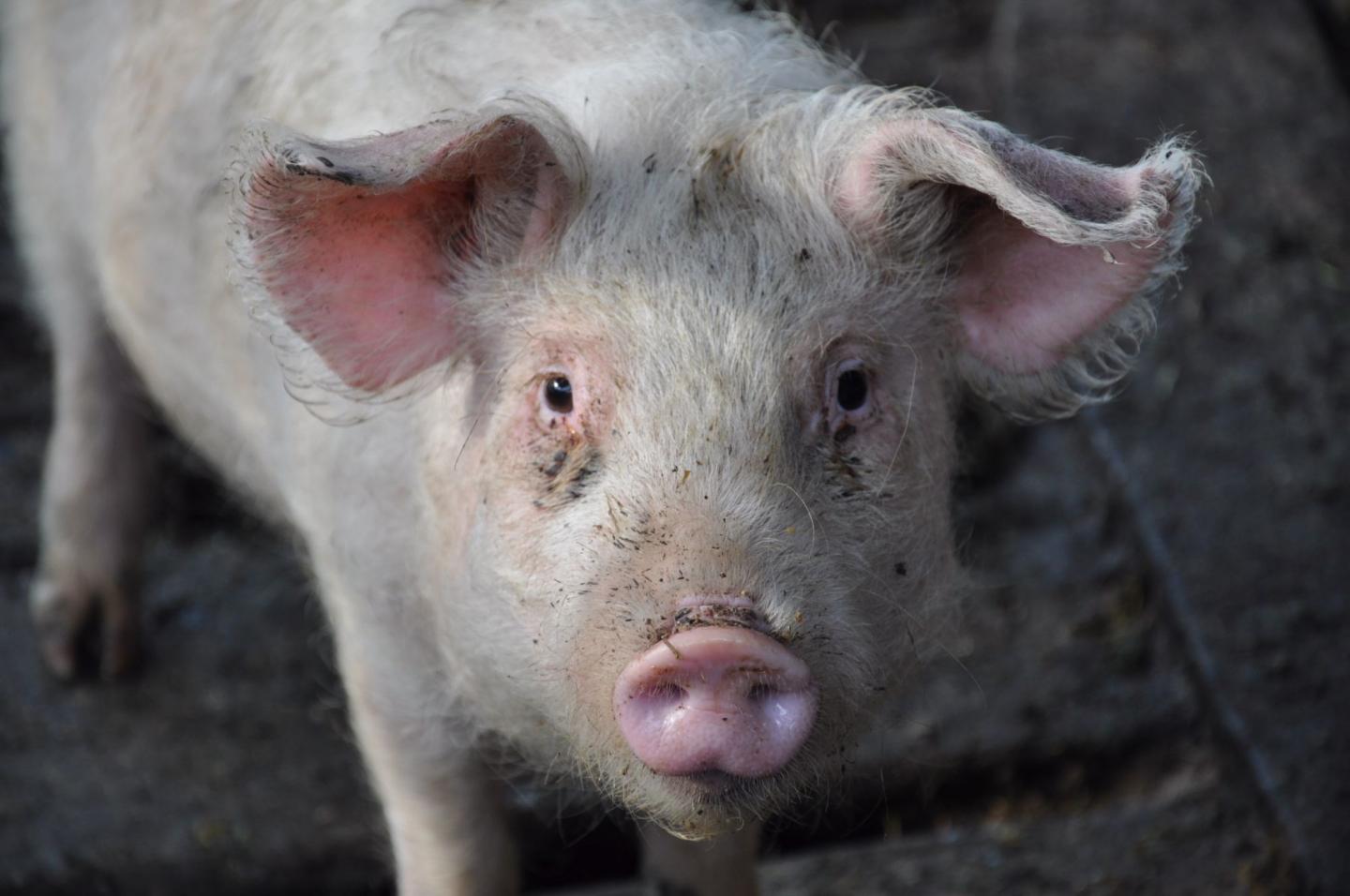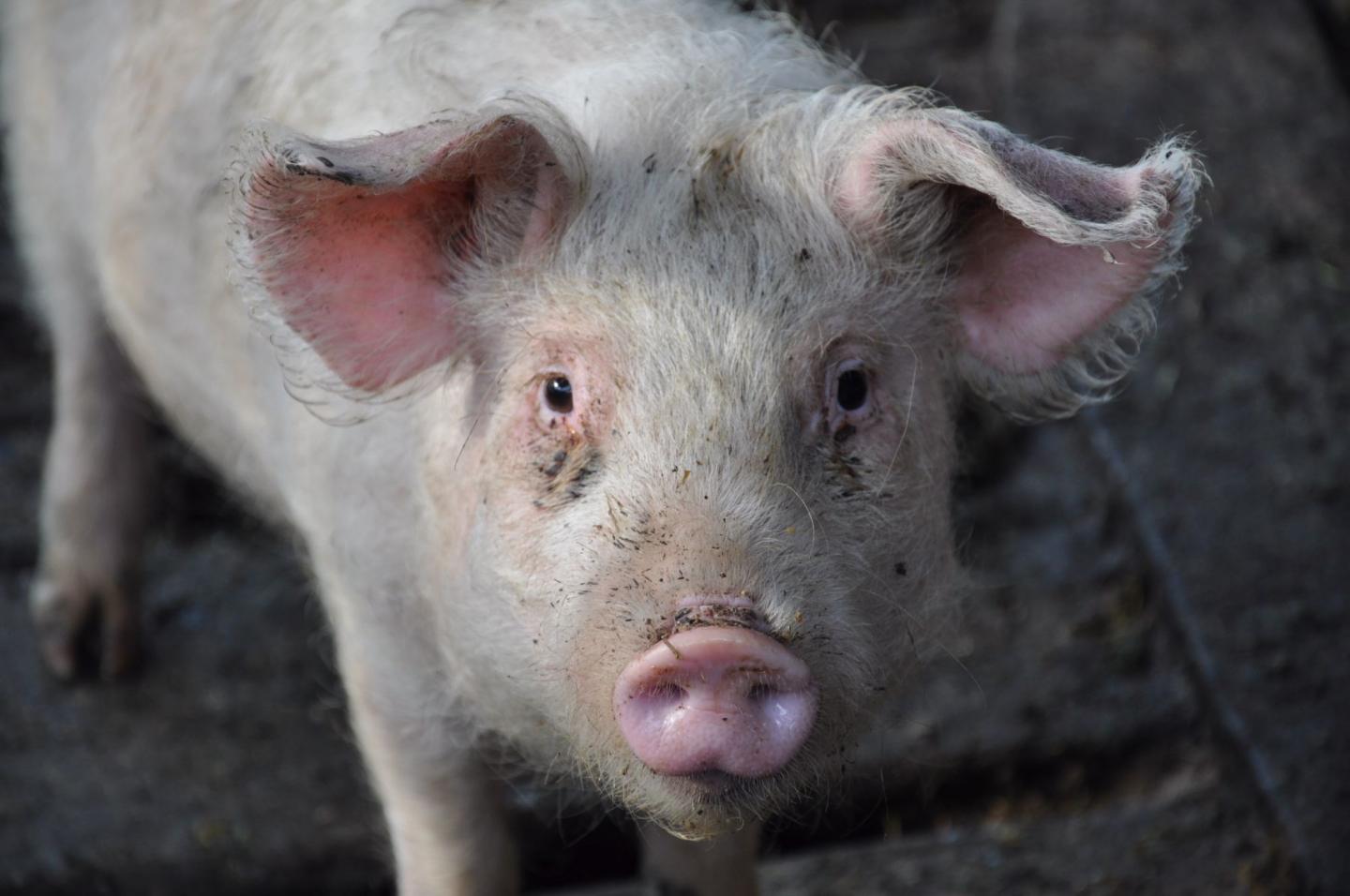
Credit: Dan Belanescu, Flickr
A DNA-copying protein from a lethal pig virus has a unique structure that may offer a target for drugs designed to combat this important agricultural disease, according to a study publishing February 28th in the open-access journal PLOS Biology by Yiqing Chen and colleagues at Fudan University in Shanghai, China.
African swine fever virus (ASFV) is a highly contagious and deadly disease in pigs that has spread from Africa to areas of Europe and Asia. Currently there are no treatments, and control relies on killing entire herds once infection is detected. Viral replication depends in part on a polymerase enzyme, AsfvPolX, that repairs breaks in the DNA, but the structure of this enzyme has not been determined in detail. Here, the authors used X-ray diffraction and nuclear magnetic resonance to solve the structure at atomic resolution.
The team found that the enzyme contained a unique binding pocket for the building blocks of DNA (nucleotides), not seen in related enzymes in other organisms. They also found several other unique structural features, including a pair of hydrophobic amino acids that interact with incoming nucleotides, and a "platform" created by two basic amino acids that stabilizes a mismatched nucleotide pair, increasing the rate of incorporation of erroneous nucleotides into the DNA chain during the repair process. Together, these features give the polymerase its unique character of a high rate of DNA replication combined with a high copying error rate.
Blocking the binding pocket with a drug may be a valuable strategy to treat ASFV infection, the authors suggest. "Exploiting this unique structural feature to attack the virus may offer a rapid route to develop treatments for this important agricultural virus," says Chen, although he noted one caveat; the high error rate of the AsfvPolX polymerase enzyme means that the virus mutates rapidly, and therefore may evolve resistance to drugs designed to block it.
###
In your coverage please use this URL to provide access to the freely available article in PLOS Biology: http://journals.plos.org/plosbiology/article?id=10.1371/journal.pbio.1002599
Citation: Chen Y, Zhang J, Liu H, Gao Y, Li X, Zheng L, et al. (2017) Unique 50 -P recognition and basis for dG:dGTP misincorporation of ASFV DNA polymerase X. PLoS Biol 15(2): e1002599. doi:10.1371/journal.pbio.1002599
Funding: This work was supported by the Key Research and Development Project of China (2016YFA0500600), the National Natural Science Foundation of China (31370728, 31230041, 21572146), the National Basic Research Program and Sichuan S&T Programs of China (2011CB966304, 2012CB910502, 2016HH0011), and USA NIH (R01GM095881, R42ES026935).
Competing Interests: The authors have declared that no competing interests exist.
Media Contact
Jianhua Gan
[email protected]
############
Story Source: Materials provided by Scienmag





